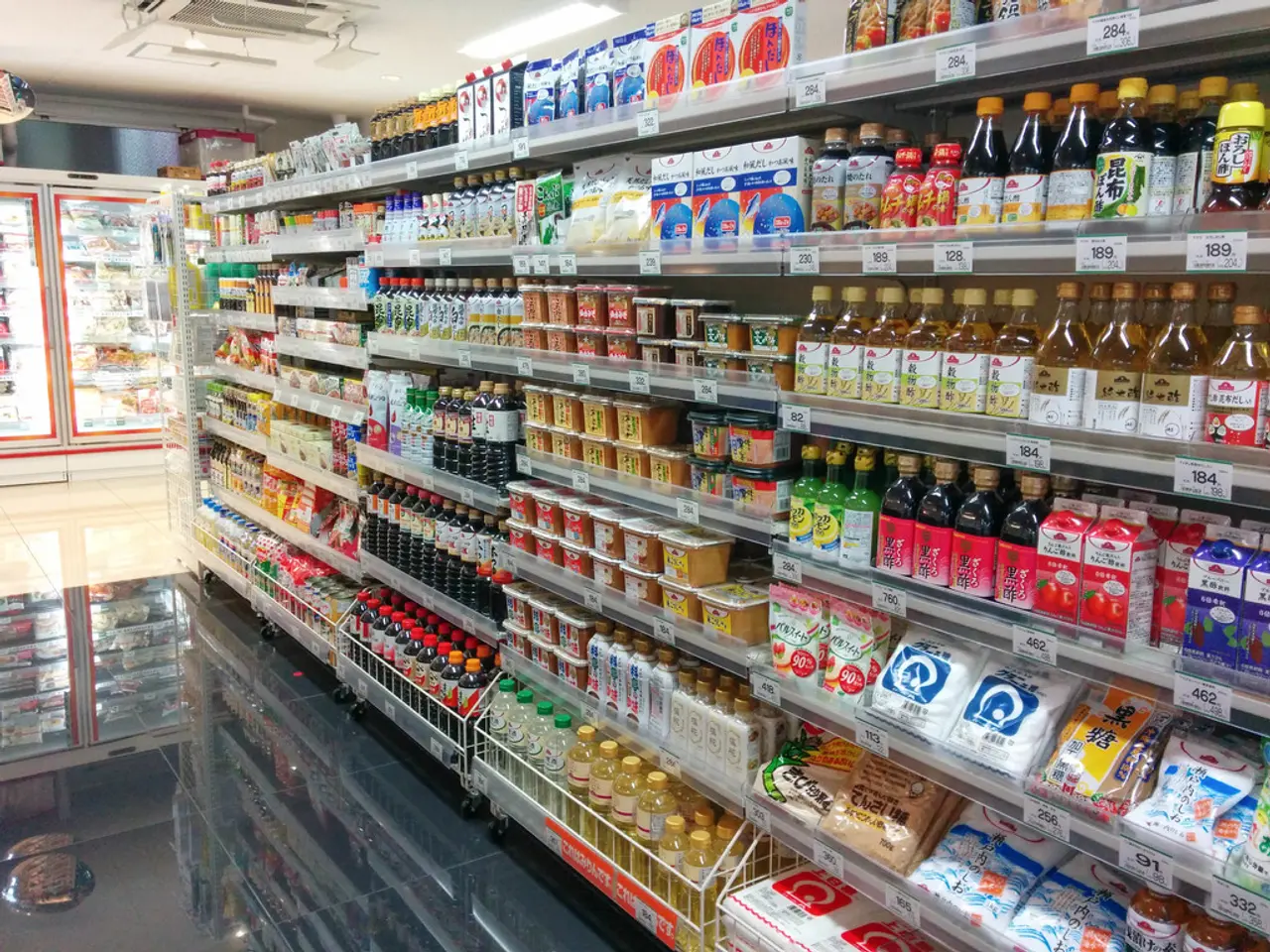Plunging WPI Inflation Rises to a 25-month Low in July Due to Decrease in Food and Fuel Costs
In July 2025, India witnessed a negative Wholesale Price Index (WPI) inflation of -0.58%, marking the second consecutive month of negative rate of inflation. This contraction was primarily driven by declines in prices of food articles, mineral oils, crude petroleum and natural gas, and basic metals.
The food segment experienced a larger year-on-year contraction of 2.1%, with vegetables, pulses, and eggs, meat & fish leading the way. Specifically, the price of key food items like onions (-44.38%), potatoes (-41.26%), and vegetables (-28.96%) saw steep declines. As a result, food inflation fell by 2.15%. Fuel prices also decreased by 2.43% year-on-year.
The decrease in WPI is also attributed to lower crude petroleum and natural gas prices, despite some month-over-month gains in July. Additionally, declines in mineral oil and basic metal prices have impacted the wholesale inflation index.
The negative WPI inflation could have significant implications for India’s economic growth and stock market. On one hand, lower wholesale prices can reduce cost pressures for businesses and consumers, potentially easing retail inflation and improving purchasing power. This can help sustain consumption and lower input costs for manufacturers, which may support economic growth. However, persistent deflationary pressures could signal weak demand, which can dampen growth prospects if sustained.
In the stock market, the reaction might be mixed. Lower input costs can boost profit margins for companies, especially in manufacturing and consumer sectors, supporting stock prices. Conversely, a deflationary environment can raise concerns about slowing demand and corporate earnings growth, possibly leading to stock market volatility or downward pressure if investors fear an economic slowdown.
Looking ahead, ICRA expects the WPI inflation to remain a key monitorable in the coming months. The index for primary articles increased by 1.18% from June to July, while the price of non-food articles increased by 2.11%. However, the inflation for food articles came in at -6.29% in July, a significant decrease from -3.75% in June. The Crude Petroleum & Natural gas posted WPI inflation at -11.15% in July, with crude petroleum at -14.86%.
It's important to note that heavy rains could push up perishable prices sharply in the second half of August, potentially impacting food inflation. Despite this, ICRA projects the headline WPI to average at 1% in FY26, with CPI inflation forecasted at 3.0-3.2%. The nominal GDP growth is likely to be limited to 8% in the fiscal, as against 9.8% in FY25, due to inflation and GDP growth projections.
In conclusion, the negative WPI inflation is mainly due to falling prices in key commodities like food and fuel. While this eases inflationary pressure benefiting consumers and businesses, extended deflation could indicate weaker demand, influencing economic growth and inducing cautious sentiment in the stock market.
- The contraction in India's WPI inflation is connected to declines in prices of several sectors, including finance, such as food articles, mineral oils, crude petroleum and natural gas, and basic metals, which are all integral parts of the industry and business market.
- As a result of the negative WPI inflation, businesses and consumers may experience cost pressures that are alleviated, potentially benefiting them by easing retail inflation and improving purchasing power, a matter that falls under the domain of finance.
- The banking sector might be impacted by persistent deflationary pressures, which can signal weak demand, and could potentially have dampening effects on economic growth if sustained.
- In the decentralized finance (DeFi) market, it's crucial to keep the WPI inflation under observation, as trends in this index can inform predictions about the price of commodities vital to the market, such as food and fuel, which ultimately affects industry and business operations in the future.




